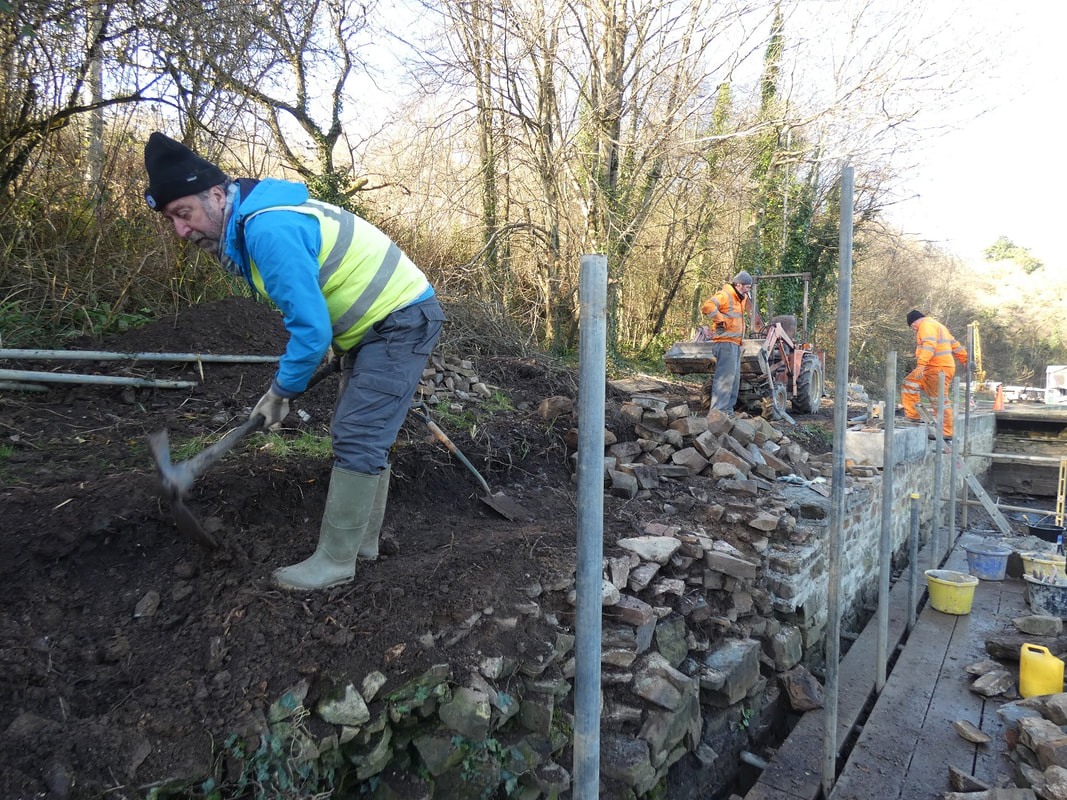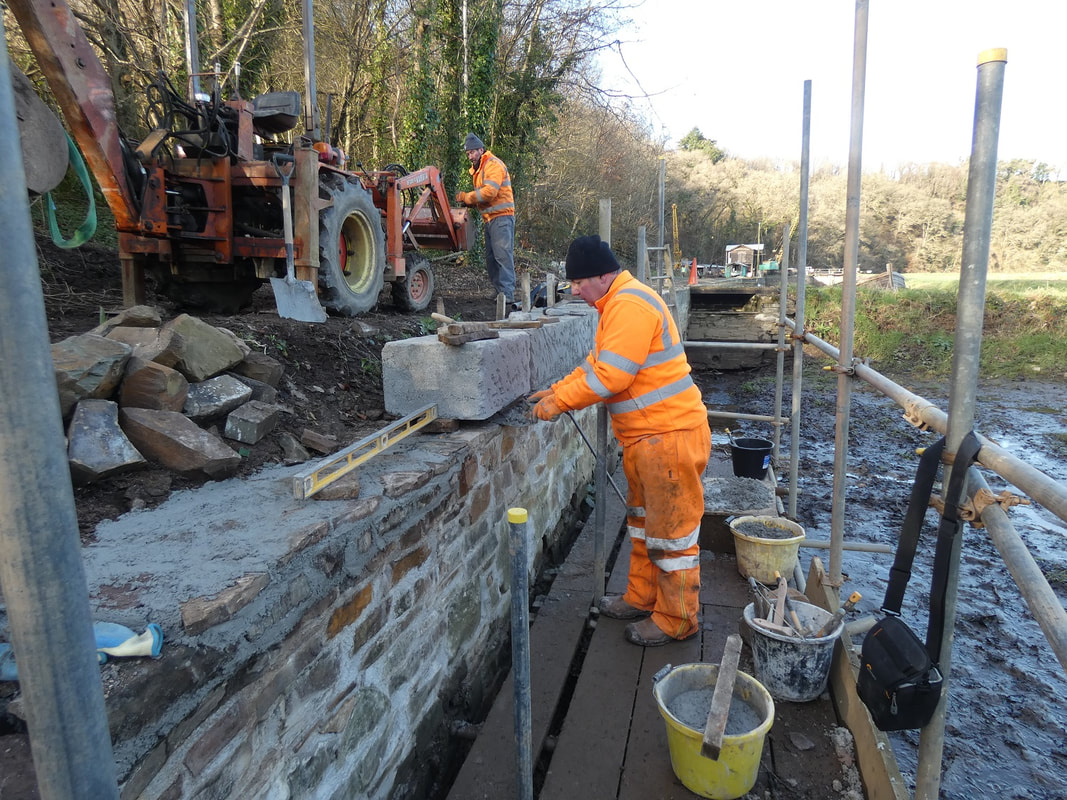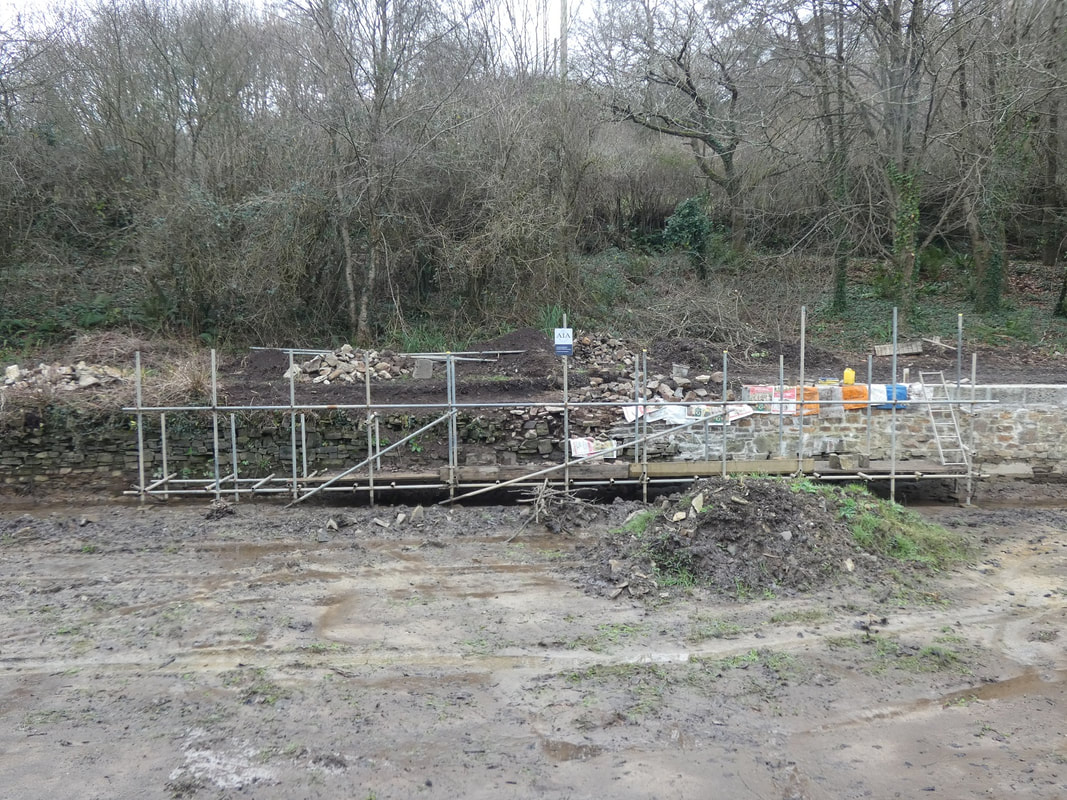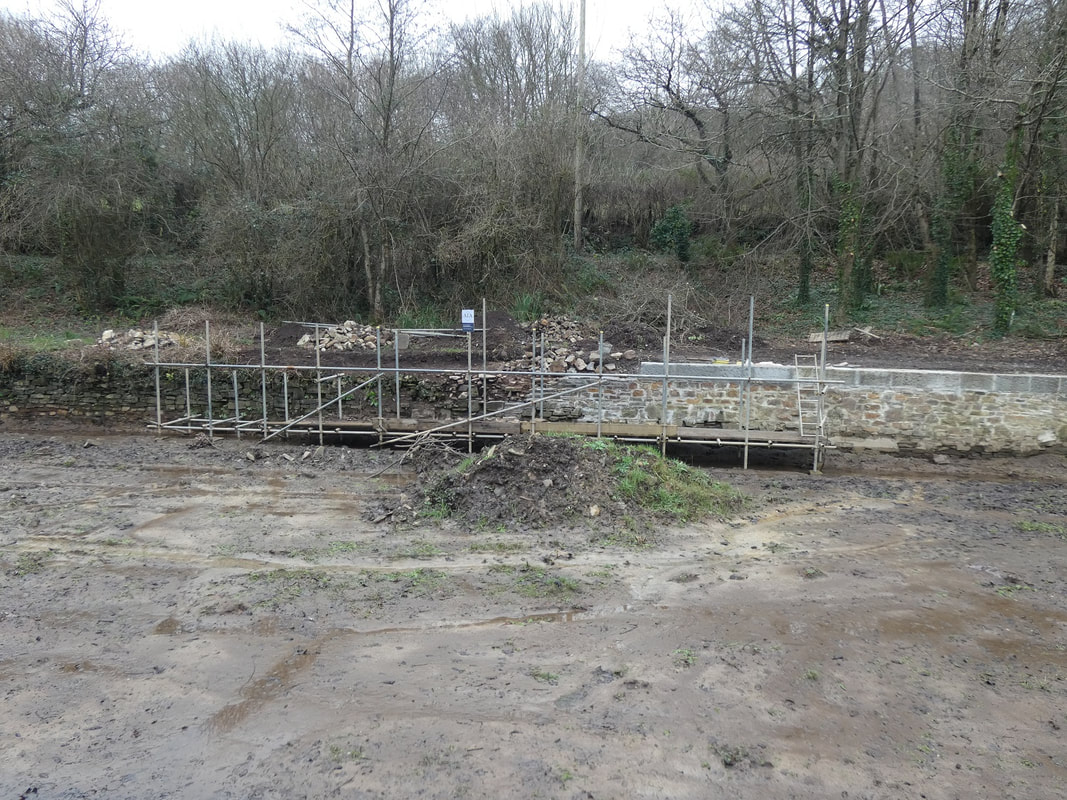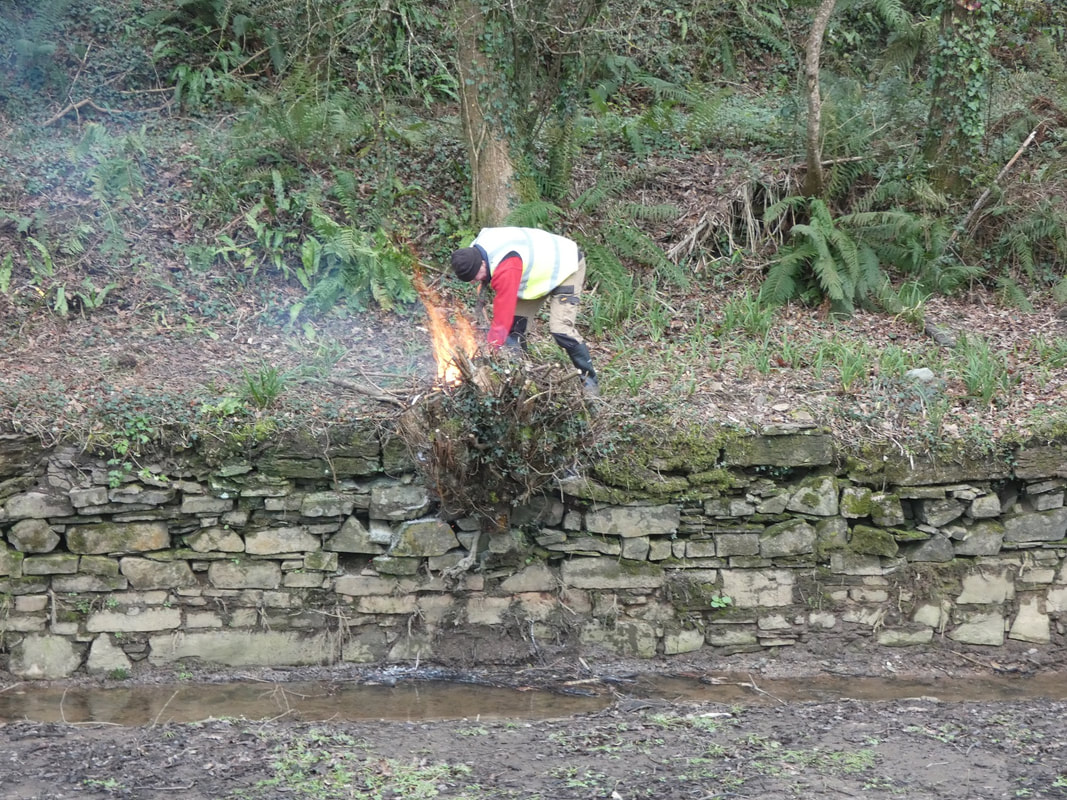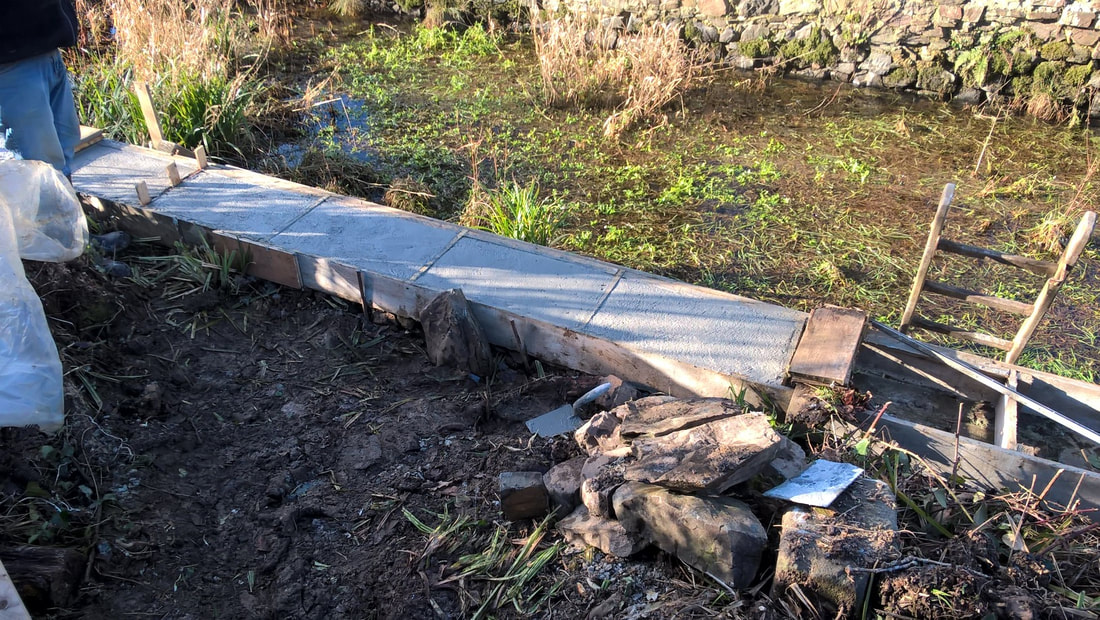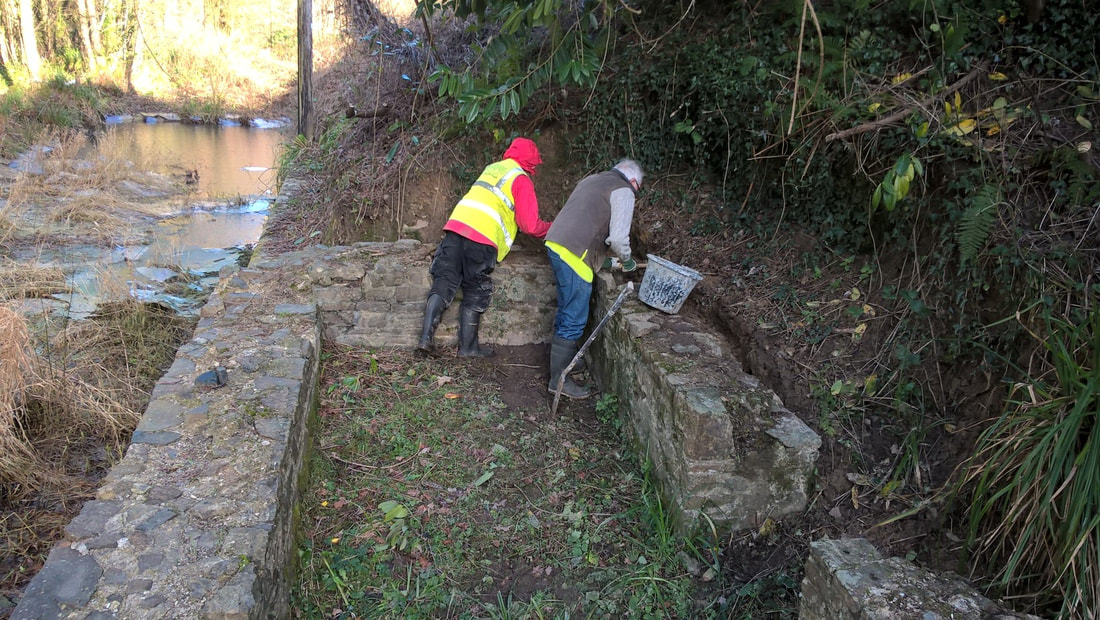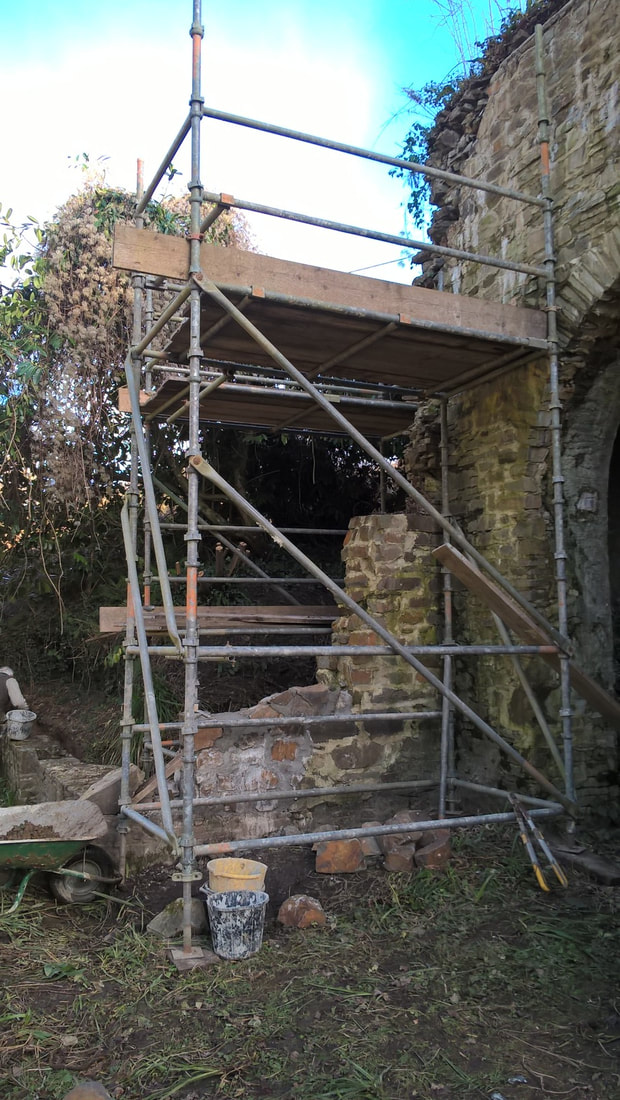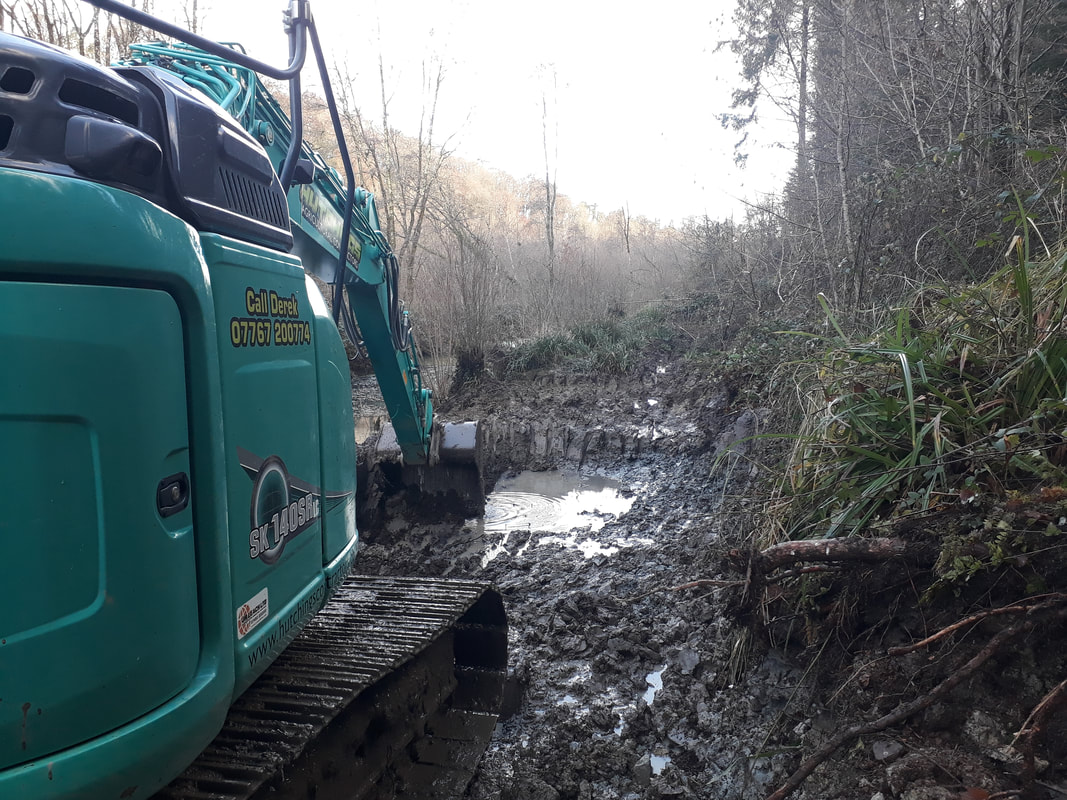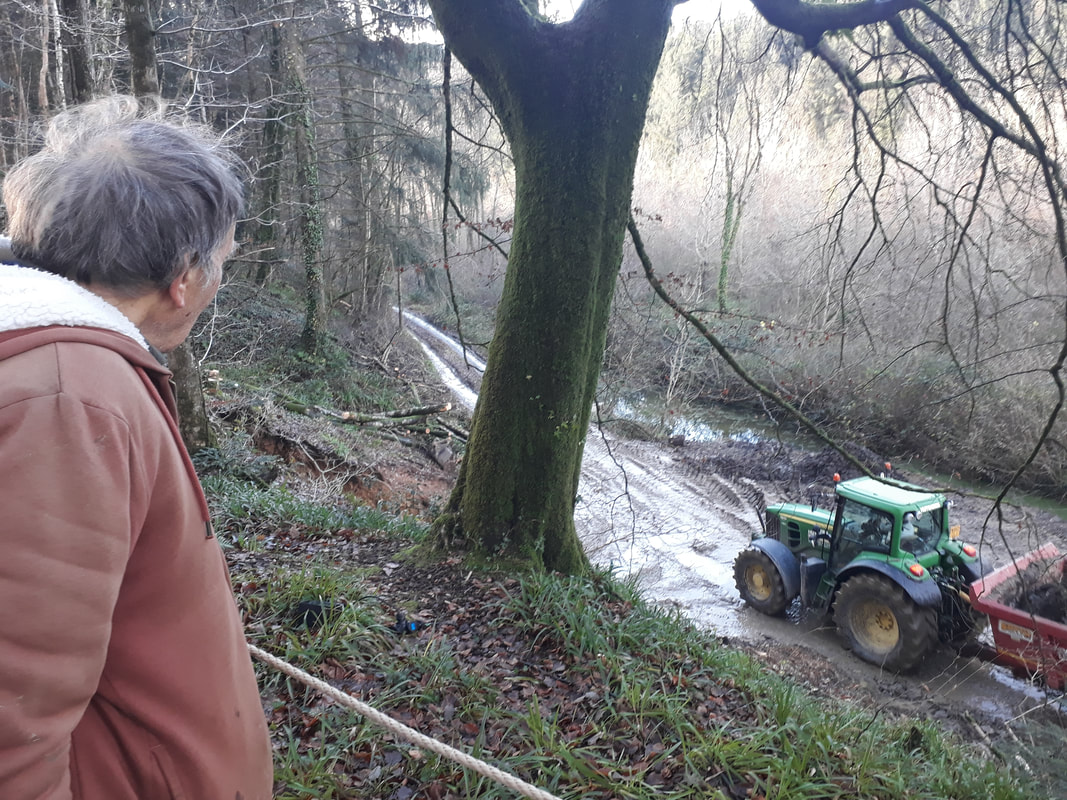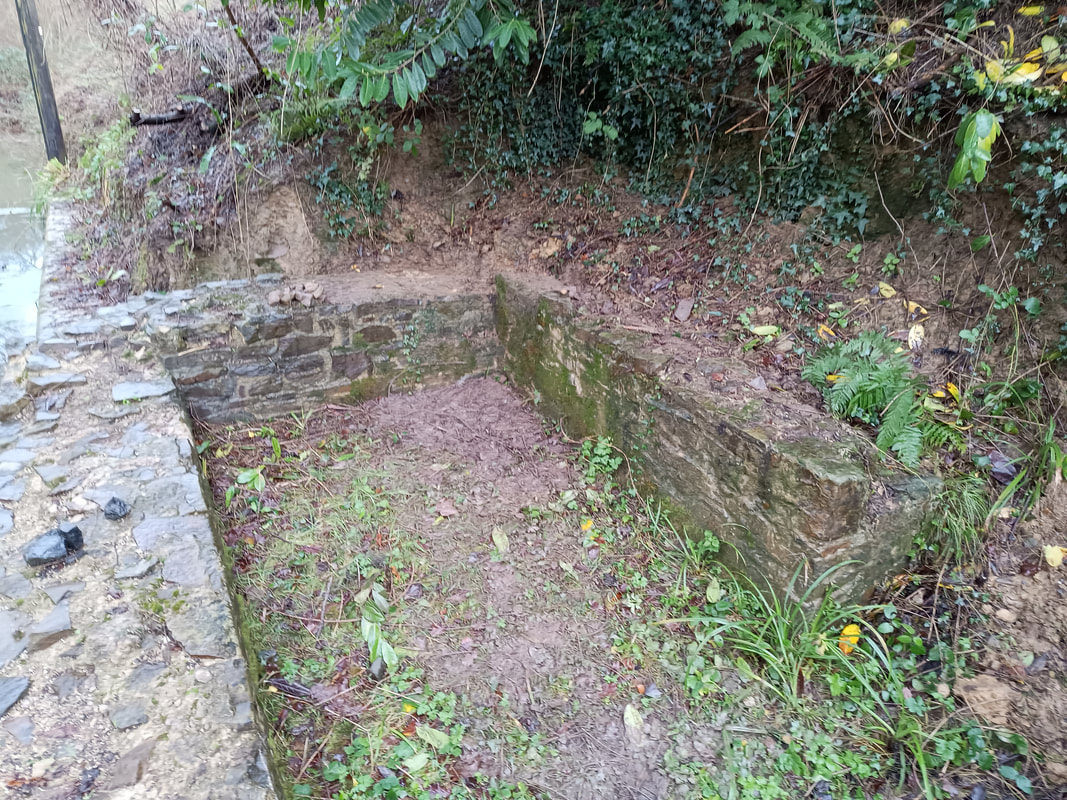January News
|
LAYING DOWN DESPITE THE COLD
Sea Lock report by Adrian Wills - 17th January 2024 Although there had been a frost overnight, it was not as severe as it could have been so on Tuesday morning (January 16th, 2024) it was decided that the coping blocks, which had previously been dry-laid on the upper wharf wall at Sea Lock, could be permanently mortared into place. While Steve levelled them up and moved them until the desired gap between each had been achieved, Nick was preparing a batch of mortar to which he included a generous quantity of antifreeze cement additive. While this was going on, I was clearing a pile of stones from the next section of wall which still had to be built back to its original height. |
We were slightly delayed from getting down onto the scaffold platform since the tide was rising when we arrived on site, and water was soon over the top of the boards. Whilst this was a nuisance, it was not a particularly high tide and within half an hour it had fallen back, uncovering the scaffold lift.
A few days before, I had put the Priestman crane and Kubota tractor batteries on charge (including my camera!), so we were able to move heavy items around quite easily once again. Nick used the Kubota to transport a load of mortar over to where we were building. He and Steve started back-filling the spaces around the coping blocks while I continued rebuilding.
Michael and Tony had intended to continue burning brash but since they had got rid of most of it the previous week, they turned their attention to removing overburden from the top of the wall just ahead of me, clearing away much loose soil and masonry.
A few days before, I had put the Priestman crane and Kubota tractor batteries on charge (including my camera!), so we were able to move heavy items around quite easily once again. Nick used the Kubota to transport a load of mortar over to where we were building. He and Steve started back-filling the spaces around the coping blocks while I continued rebuilding.
Michael and Tony had intended to continue burning brash but since they had got rid of most of it the previous week, they turned their attention to removing overburden from the top of the wall just ahead of me, clearing away much loose soil and masonry.
There were still a few pockets of frost remaining throughout the day, but the activities we were all involved in kept us plenty warm enough. The low temperature did have the great advantage of keeping ‘mozzies’ at bay.
Following lunch, Steve and Nick finished laying a fourth coper which Nick had trundled over and I had completed another metre or so of walling. The temperature was falling fast and a severe frost warning had been issued by weather forecasters for that night, so we used up the amount of mortar we still had, covered all the new work with layers of plastic, cleaned our tools and retired at just about the same time as we normally do.
Despite the cold weather a considerable amount of walling had been laid and we considered it to have been another good day’s progress.
Despite the cold weather a considerable amount of walling had been laid and we considered it to have been another good day’s progress.
NOT SHROVE TUESDAY BUT PANCAKES COME TO MIND! Alternate title - A Tale of Flat Batteries
Sea Lock report by Adrian Wills - 11th January 2024
Sea Lock report by Adrian Wills - 11th January 2024
|
Work at Sea Lock was due to restart on Tuesday, January 2nd 2024 but due to the amount of rain which had fallen over the previous few days it was postponed until Tuesday 9th. It was a dry day but very cold. There had been quite a severe frost overnight and standing water was frozen solid.
During the festive break I had cast some more coping blocks and it was planned that when Steve and Nick arrived we would set about transporting the blocks from where I had stacked them over to the wall and lay them in place. We decided that it would be simpler to use the Priestman crane to carry two blocks at a time to the wall rather than the Kubota tractor since they were quite heavy and it would be easier to manoeuvre the blocks into place using the crane. Before we could bring the blocks over, it was necessary to remove some over-hanging branches, which would get in the way of the crane’s boom. Whilst Steve and Nick attacked these branches with chain saws, I faffed about trying to get lifting strops properly attached to the blocks. In the meantime, Michael and Tony were keeping themselves warm by cutting up and burning a load of brash at the far end of the wharf wall. |
With the over-hanging branches removed and cleared away Steve, Nick and I turned our attention to the crane. It wouldn’t start! It was stone cold and its battery was obviously flat. Back to the Kubota. It thought about starting but was also very cold and after a couple of half-hearted attempts to stop also flattened its battery.
I nipped home to bring the Land Rover down to the site to use its battery to jump-start the others. It behaved itself and we soon had both crane and tractor engines running. All was going well until the crane ran out of fuel! Back to the tractor once again.
|
The strops were rearranged so that one block was lifted by the backhoe and the larger block was picked up by the front bucket. Nick drove the tractor over to the wall and he and Steve lowered the blocks onto where they were going to be permanently laid. Nick went off for a third block while I decided to take some pictures of work in progress only to discover that the battery in my camera was FLAT! Thank goodness for mobile phones.
After lunch, the outside temperature was still too low to sensibly start mixing and laying mortar, so we decided to get the crane running again. Needless to say, this was not just a simple matter of filling its tank with diesel. The fuel system had to ‘bled’ to remove air from the empty pipes and then the engine had to be cranked to suck fuel through to its injectors. Since its battery had not been recharged, the Land Rover was once again linked up to it and eventually the crane’s engine fired up. |
Leaving it running for a time until the fuel was flowing freely thorough the engine, we cleared up all our tools, put everything to bed and packed up for the day.
At least, three more coping blocks are ready to be mortared into place and the towpath is now wide enough to drive the crane safely along it. So, all in all it was a productive if somewhat cold day.
At least, three more coping blocks are ready to be mortared into place and the towpath is now wide enough to drive the crane safely along it. So, all in all it was a productive if somewhat cold day.
ROSEMOOR RESTORATION REPORT by Tony Nicholls - 10th January 2024
A hardy band of volunteers assembled at Rosemoor on Wednesday in freezing temperatures. The upside of this was that the ground was rock hard and we weren’t sloshing around in six inches of mud as is often the case at this time of year.
A hardy band of volunteers assembled at Rosemoor on Wednesday in freezing temperatures. The upside of this was that the ground was rock hard and we weren’t sloshing around in six inches of mud as is often the case at this time of year.
View of upper basin
There was some debate, given the temperature, as to whether we should mix concrete but we decided to risk it. This enabled us to work on two fronts – rebuilding the buttress at the north west corner of the lime kiln and casting more coping stones for the wall of the upper basin. By the end of the session we had managed to cast a total of five. Each mould requires about three barrow loads of concrete so our mixing team was kept very busy! We are now approaching the corner of the wall where it returns which will require special curved formwork so this will be something of a challenge.
The rest of the team concentrated on clearing the chamber adjacent to the lime kiln (whose purpose we are still not sure about) and excavated a lot of earth which had subsided onto the perimeter wall. This is one of those areas which tends to get neglected so it was good to do some much needed maintenance here.
Excavating north wall of chamber
Working parties are generally held every Wednesday morning, meeting in the main car park at RHS Rosemoor, Torrington at 9.30am. Please contact Project Manager, Ian Harrison (tel.01237- 475707) for more information.
ROSEMOOR RESTORATION REPORT by Michael Elliott - 3rd January 2024
Rosemoor are busy extending their Lower Woodland Walk to run alongside the tucking mill leat / canal feeder and on 20 December part of the team had visited the work site.
Rosemoor are busy extending their Lower Woodland Walk to run alongside the tucking mill leat / canal feeder and on 20 December part of the team had visited the work site.
On arriving on 3 January, a staff member rushed up to say their diggers tracks were under water and could we lower the level in the canal! Sure enough the canal was full and flowing nicely down the spillway.
A quick check showed the flap valve on the lower drain was open. The water was obviously flowing in faster than it could handle, so the stop planks at the tucking mill were removed to (slowly) drain the canal.
One advantage of the flow was it largely removed the previous carpet of duck weed.
A quick check showed the flap valve on the lower drain was open. The water was obviously flowing in faster than it could handle, so the stop planks at the tucking mill were removed to (slowly) drain the canal.
One advantage of the flow was it largely removed the previous carpet of duck weed.
The high-water levels were a good test for the design of our water control measures. The top weir structure above the limekilns was flowing very fast with perhaps 50mm of water depth flowing down the spillway (the 150mm diameter submerged drain plug was also open). At the weir next to the tucking mill there was about 60mm of water running over the top board when we arrived which had just been removed in the photo. The water was still some way below the wide sluice which we hope would cope with a "100 year" flood.


